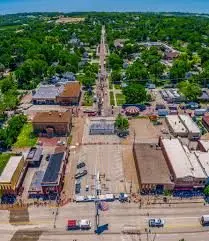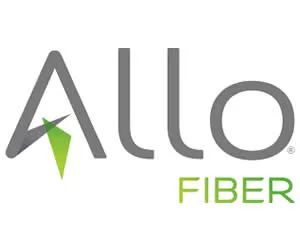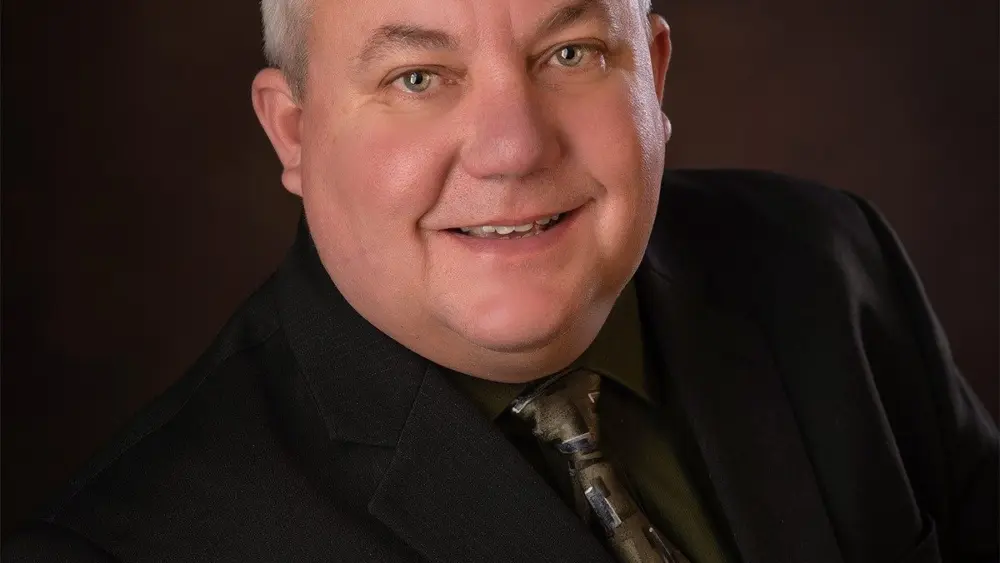
Photo / Cindy Gonzalez
Garry Clark is the inaugural executive director of Omaha’s Inland Port Authority, a nine-member board formed to oversee new economic activity, much of it publicly funded, in a 3,000 tract area of North Omaha and near Eppley Airfield. He returns to the city after getting college degrees in Nebraska and working at various other jobs across the country. Shown here at Millwork Commons, a revived part of north downtown Omaha that could serve as a model of sorts for the port authority district.
Cindy Gonzalez
Nebraska Examiner
OMAHA — Then just out of high school, Garry Clark stepped into Nebraska sight unseen from Washington D.C., a city kid headed to small-town Blair for a scholarship and track team opportunity at now-shuttered Dana College.
A TEDxOmaha talk he gave years later shined light on how those college years and family roots prepared him to face other new frontiers — economic developer jobs in Nebraska cattle country and in Florida, Maryland, Oklahoma and more. Clark called that 2019 talk, “Running Shoes, Food Stamps and Cornfields.”
He also wrote a book: “Unlikely Viking: From the D.C. Projects to rural Nebraska,” which published after he gained local notoriety as a Fremont official who helped the Dodge County community ease a workforce housing crunch fueled by a new Costco chicken processing operation.
Now age 44 and after resigning this year from a Tulsa job he had held for less than a year, Clark has returned to the city where he earned a master’s degree and interned for a housing agency.
Once again, his new task is somewhat uncharted. He’s the inaugural executive director of Omaha’s Inland Port Authority, a relatively new entity overseeing what many tout as the largest public investment in job and business creation in North Omaha’s modern history.
Clark told the Nebraska Examiner he expects a “re-emergence” of the roughly 3,000 acres under the port authority’s watch, an area in Nebraska’s most populous city he described as “stopped in time” while communities around it flourished.
Said Clark: “To be a part of a significant change that will probably override systemic issues, historical displacement issues and isolation — this is an economic developer’s dream.”
Clark gets rolling
Clark made first key appearances in early August, presiding over his initial port authority board meeting and attending a forum in which community members provided input on what they would want an innovation hub to look and feel like within the boundaries.
An innovation hub is just one of the elements expected to rise at the site. A 2021 Nebraska law allowed creation of five inland port authorities across the state, empowering them with tools such as the ability to sell revenue bonds to finance projects and to enter into contracts to spur economic development.
Legislative tweaks in 2024 gave the Omaha port authority more muscle and funding sources. Pushing the changes were a pair of lawmakers, State Sens. Terrell McKinney and Justin Wayne of North Omaha, who had been critical of a real estate development team’s $90 million state-funded plan for a North Omaha business park the two had advocated for near Eppley Airfield.
Wayne and McKinney had successfully carved out funding for the historically disadvantaged districts and thought there should be more community input in shaping the business park and other pandemic-related resources headed to their represented areas. They called the funds a “once-in-a-lifetime” opportunity that they wanted to get right.
One legislative change, for example, required the business park developer to win a letter of support from the Omaha port authority’s nine-member board before it could tap the public funds. McKinney now chairs the port authority board.
The change shifted oversight of the business park contract from the Nebraska Department of Economic Development to the port authority board. And it put $30 million in state seed money for an “innovation district” under the guidance of the port authority. The legislation also called for construction of at least 150 new apartments and 20 houses within the boundaries.
To help carry out operations, Wayne and McKinney helped secure additional dollars for Omaha’s port authority program by directing interest from state funding pots such as the Perkins County Canal and new prison projects. The board expects to soon receive an $11 million installment as a result.
Additionally, a new $45 million tournament-style youth sports facility is rising in the area, also paid by state and federal dollars related to COVID-19 grants. While that complex along the north shore of Carter Lake will be operated and maintained by the City of Omaha, it will enhance and bring tourism to the port authority area.
‘Awkward’ start for business park
Many details still are undetermined for the business park — the anchor of the port authority site. But a leader of the group that DED awarded the $90 million state contract to in January 2024 said Omahans could see land preparation as early as next spring or summer.
George Achola of Burlington Capital described the process so far as an “awkward” dance: partners trying to figure out rhythm and next steps. In addition to Burlington, the development team includes the Omaha Economic Development Corp. and Greater Omaha Chamber of Commerce.
“We stumbled a few times. There were disagreements,” Achola said. ”I think Garry (Clark) coming in and helping to choreograph will be beneficial.”
Achola said he thinks partners are all now moving in the same direction.
Much of the uproar erupted after plans for the business park were revealed in late 2023 — and area residents learned via a news report that their homes were in the way of likely development.
Since then, officials have taken the potential use of eminent domain off the table and assured residents there would be no forced acquisition of property.
Some lawmakers, including Wayne, were critical that the developer’s plan did not direct money toward building actual structures. The development team, pushing back, said legislators were well aware of substantial costs to prepare the area for shovel-ready lots. Its focus, it said, was always on property acquisition, cleanup, new roads and utility installation and recruitment of industrial-type employers that then would build there.











